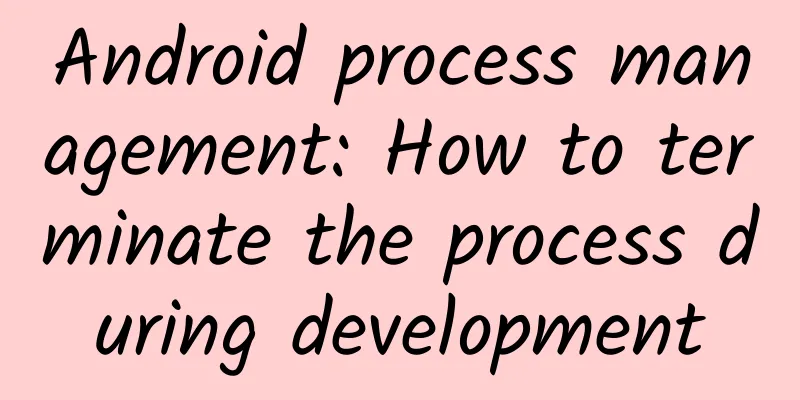Android process management: How to terminate the process during development

|
In Android, directly killing the application process is usually not a recommended practice, but sometimes you may need to kill the corresponding process for certain specific needs (such as debugging or managing applications).
or:
The Android system has its own strategy for managing processes and memory. If there is enough memory, Android will not kill any process at will; but if there is insufficient memory, the process may be killed at any time. When there is enough memory, Android will try to restore the previously killed process. For application developers, you should try to avoid relying on static variables to store important data, but should save the data to files or other persistent storage. At the same time, you also need to pay attention to the reasonable management of the application's memory usage to avoid the process being killed by the system due to problems such as memory leaks. |
>>: LinearLayoutCompat makes your Android linear layout more compatible, flexible and consistent
Recommend
Too sudden! A famous actor died of cancer. This disease is often diagnosed in the middle or late stages...
According to his niece Meng Xilin, the famous Hon...
Solve the three major problems of App channel tracking and increase the efficiency of attracting new users by 200%
Everyone is promoting apps, so why is your averag...
Do you want to be on the trending list? Read this before deciding
If a product with good ASO is like a famous celeb...
WeChat Android version 8.0.14 beta version released, with developer updates
[[424212]] Yesterday, Tencent WeChat team release...
Tongcheng SEO Training: How to design a high-end marketing website?
When an enterprise builds an adaptive marketing w...
How to make the next match-3 game?
[[140846]] Mobile games have entered a white-hot ...
A straightforward boy who loves insects has become a "popular science expert" in 60 years
On December 21, 1823, a boy was born in a poor fa...
up to date! Traffic rankings of 33 information flow platforms, a must-read for advertising!
Do you want to know how the major information flo...
A guide to placing game ads on Toutiao today!
On Toutiao , there are 50 million people who play...
How to write good copy: Understand the five psychological factors and hit the user's pain points
In this era of text proliferation, there are too ...
Bilibili’s 2020 marketing plan!
Bilibili (English name: bilibili, referred to as ...
How to write the copy for May 1st Labor Day?
It’s not Labor Day yet. The chat mode of " w...
Nezha Conquers the Dragon King teaches you how to prevent cancer: fighting the cancer demon with three heads and six arms, you must prepare these "magic weapons"!
When the Dragon King stirred up the storm, Nezha ...
This plant can catch insects in just 0.01 seconds
What is the biggest difference between plants and...
Are the hard days of the color TV industry coming to an end?
On November 22, along with the release of the 201...









